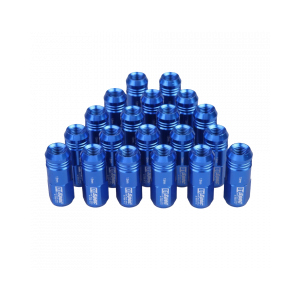Understanding the Importance of LS1 Sump Gasket in Engine Performance and Maintenance Tips
Understanding LS1 Sump Gaskets Importance and Maintenance
The LS1 engine, known for its robust performance and efficiency, is a favorite among car enthusiasts and racers alike. One critical component that often gets overlooked during maintenance and upgrades is the sump gasket, also known as the oil pan gasket. This article delves into the role of the sump gasket in the LS1 engine, its significance, and tips for maintenance to ensure your engine runs smoothly.
What is a Sump Gasket?
The sump gasket is a sealing piece that sits between the oil pan and the engine block. Its primary function is to keep engine oil contained within the oil sump and prevent leaks. The LS1 engine, being a part of General Motors' LS family, utilizes a specific design for the oil pan that requires a well-fitted sump gasket to maintain its performance.
Importance of the Sump Gasket
1. Leak Prevention The most critical function of the sump gasket is to prevent oil leaks. Oil leaks can lead to a significant drop in oil levels, resulting in insufficient lubrication for engine components. This can cause severe damage and potentially lead to engine failure.
2. Pressure Maintenance The sump gasket helps maintain proper oil pressure within the engine. An improper seal can result in fluctuations in oil pressure, which is crucial for optimal engine function. Low oil pressure can cause overheating and premature wear of engine parts.
3. Performance Optimization A good-quality sump gasket ensures that the oil flows smoothly, allowing the engine components to operate efficiently. This is especially important for performance engines where precise lubrication is vital for high RPM operations.
4. Cost Savings By preventing leaks, a properly functioning sump gasket can save car owners from costly repairs associated with engine damage from oil starvation. It is far less expensive to replace a gasket than to repair or rebuild an engine.
Signs of Sump Gasket Failure
ls1 sump gasket

Recognizing the signs of a failing sump gasket is crucial for addressing issues before they escalate. Common indications include
- Oil leaks Puddles of oil under the vehicle or a noticeable drop in oil levels can signal gasket failure. - Oil stains If you notice oil stains on the oil pan or engine block, it’s a sign that the gasket may be failing or has already failed. - Burning oil smell If oil leaks onto hot engine components, it may produce a burning smell, indicating a potential fire hazard. - Increased engine noise Insufficient lubrication due to oil leaks can result in increased friction, leading to abnormal engine sounds.
Maintenance Tips
1. Regular Inspections Check for oil leaks regularly and inspect the sump gasket during routine maintenance. If you notice any signs of wear or damage, it’s essential to replace it promptly.
2. Quality Replacement When it’s time to replace the sump gasket, opt for high-quality aftermarket or OEM gaskets to ensure longevity and effectiveness.
3. Proper Installation Ensure that the gasket is installed correctly. An uneven surface or insufficient torque can cause leaks. It’s advisable to follow the manufacturer’s guidelines during installation.
4. Monitor Fluid Levels Regularly check your engine oil levels and condition. Low oil levels could indicate a leak, prompting a further investigation of the sump gasket.
Conclusion
The sump gasket might be a small component in the grand scheme of your LS1 engine, but its role is undeniably significant. Regular maintenance, keen observation of potential failure signs, and timely replacement can prolong the life of your engine and enhance its performance. For every car enthusiast or serious racer, paying attention to the sump gasket is a crucial part of responsible engine management and maintenance.
-
Understanding Automotive Oil Seals: Essential Components for Engine and Shaft Protection
News Jul.30,2025
-
The Importance of Heavy Duty Seals in Industrial and Residential Applications
News Jul.30,2025
-
Exploring Industrial Oil Seals: From Felt Oil Seals to TTO and CFW Solutions
News Jul.30,2025
-
Essential Guide to Oil Seals: From Radial to Metal-Cased Seals for Industrial Reliability
News Jul.30,2025
-
Choosing the Right Oil Seals and Gaskets for Industrial and Automotive Applications
News Jul.30,2025
-
Cassette Seals: Durable Sealing Solutions for Harsh Environments
News Jul.30,2025
-
Understanding the Front Main Engine Seal: Purpose, Maintenance, and Installation
News Jul.29,2025
Products categories















